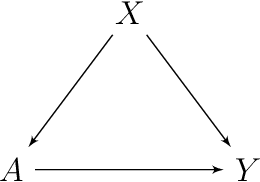Andrew Ying
Minimax Kernel Machine Learning for a Class of Doubly Robust Functionals
Apr 07, 2021

Abstract:A moment function is called doubly robust if it is comprised of two nuisance functions and the estimator based on it is a consistent estimator of the target parameter even if one of the nuisance functions is misspecified. In this paper, we consider a class of doubly robust moment functions originally introduced in (Robins et al., 2008). We demonstrate that this moment function can be used to construct estimating equations for the nuisance functions. The main idea is to choose each nuisance function such that it minimizes the dependency of the expected value of the moment function to the other nuisance function. We implement this idea as a minimax optimization problem. We then provide conditions required for asymptotic linearity of the estimator of the parameter of interest, which are based on the convergence rate of the product of the errors of the nuisance functions, as well as the local ill-posedness of a conditional expectation operator. The convergence rates of the nuisance functions are analyzed using the modern techniques in statistical learning theory based on the Rademacher complexity of the function spaces. We specifically focus on the case that the function spaces are reproducing kernel Hilbert spaces, which enables us to use its spectral properties to analyze the convergence rates. As an application of the proposed methodology, we consider the parameter of average causal effect both in presence and absence of latent confounders. For the case of presence of latent confounders, we use the recently proposed proximal causal inference framework of (Miao et al., 2018; Tchetgen Tchetgen et al., 2020), and hence our results lead to a robust non-parametric estimator for average causal effect in this framework.
 Add to Chrome
Add to Chrome Add to Firefox
Add to Firefox Add to Edge
Add to Edge